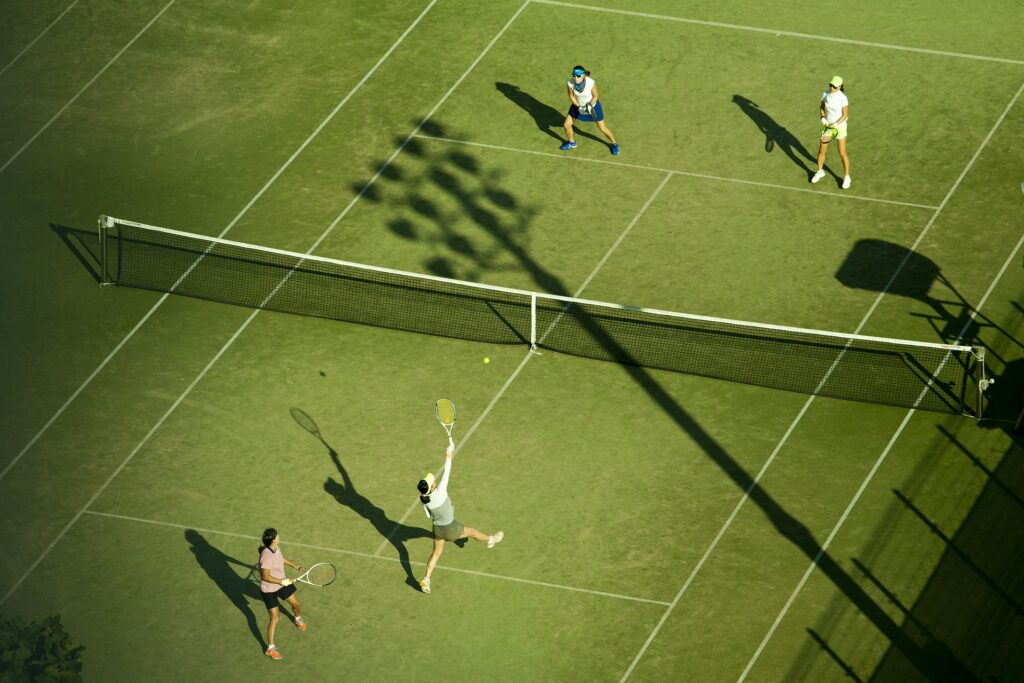1. Path
You can swing your racket in 3 different paths:
– Low to high (makes the ball go up)
– High to low (makes the ball go down)
– Middle to middle (makes the ball travel in a flat line)
If your tennis ball is consistently going in the net this is likely because you are swinging your racket from high to low. To fix this start swinging your racket from low to high. Start with the racket string lower than the height of the ball and swing up, this will also help you hit with topspin if your racket angle is correct.
2. Angle
When you make contact with the ball the angle of your racket will affect where the ball goes as well as the spin you can hit with. Your racket could be angled in the following ways:
– Vertically (string facing the sky (open) or string facing the ground (closed))
– Horizontally (string facing to the left or string facing to the right)
If your racket is open (facing the sky) you will be hitting the ball with either slice (backspin) or flat (no spin at all) and the ball is likely to go up into the air because that is where the racket string is facing. To stop the ball going up into the air and to start hitting with topspin you will need to slightly close the racket angle.
Similarly, if your racket string on contact with the ball is facing to the left then the ball is going to travel in that direction. To hit the ball where you want it to go, your racket string must be facing in that direction on contact with the ball.
3. Speed
Your racket acceleration or racket speed upon contact with the ball plays a huge role in how far the ball travels as well as how much spin you can put on the ball.
For example:
– If your swing path is low to high with an open racket (facing the sky) and you swing slowly the ball will not go as high into the air or travel as far forwards as if you swung the racket fast. Swinging the racket faster will make the ball travel higher into the air and further forwards most likely making the ball land long (out the back of the court past the baseline).
– If your swing path is low to high with a slightly closed racket face (racket angled slightly down) and you swing the racket slowly you will not put as much topspin on the ball as if you swung the racket more quickly.
To conclude...
The path, angle and speed (PAS) of your racket upon contact with the ball make a huge difference to your shot. It is likely that you could correct many of your errors while playing tennis using one of the three so understanding PAS will really help you improve your game. Path, angle and speed are linked so if for example you change the speed of your racket you may have to change the racket angle to make the ball go over and in the court. Tennis coaches all over the world use PAS to help their players improve so if you are struggling to put the ball in play find a coach who can help you understand PAS.
I hope this post was of value to you. I’d love to hear your thoughts, please do send me a message on Instagram (simonjamescoaching).
Thank you for reading.
Simon James



